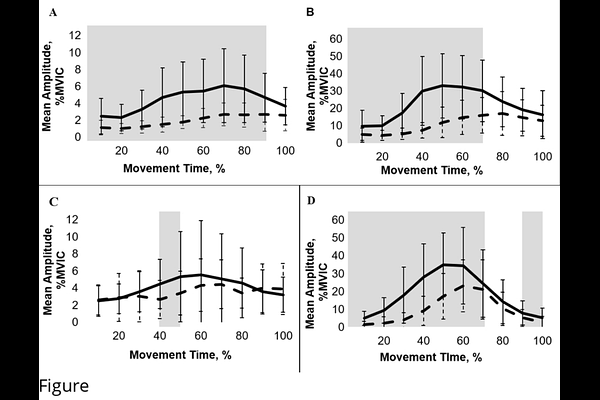Altered kinematics and muscle activities during half squats in people with ankle sprain history

Altered kinematics and muscle activities during half squats in people with ankle sprain history
Matsumura, U.; Tsurusaki, T.; Ogusu, R.; Yamamoto, S.; Lee, Y.; Sunagawa, S.; Koseki, H.
AbstractRegardless of the high recurrence rate, copers manage the damage after a sprain. Copers do not experience ankle instability and continue their daily activities. However, it is unclear whether copers can use movement strategies similar to people without an ankle sprain. Identifying movement strategies can improve efficacy and prevent unwanted effects during training. Therefore, we aimed to compare the kinematics and muscular activities of the lower limbs during half squats and gait between copers and healthy controls. Ten copers (7 men, 3 women; age = 21.6 {+/-} 1.1 years) and 10 controls (6 men, 4 women; age = 22.5 {+/-} 2.8 years) were included in the cross-sectional study. We compared angles of the thigh, shank, and foot calculated from inertial measurement units and muscle activities of the biceps femoris long head, rectus femoris, gastrocnemius, and tibialis anterior between copers and controls during half squats and gait. For half squats, copers demonstrated thigh restriction with an effect size of 0.67-1.35, whereas we observed no significant differences in the shank and foot angles in the descending phase. Copers demonstrated less activity with an effect size of 0.61-1.58 in all four muscles. Copers showed lower activities of the rectus femoris and tibialis anterior during the same period of thigh restriction. For gait, there were no significant differences in lower limb angles and muscle activities between copers and controls. Copers may restrict thigh rotation unintentionally, leading to less muscle activity during half squats. Removing unconscious restrictions using sensor-based quantitative feedback can enable copers to obtain more efficient training. Our results suggest that assessing the limb movements of copers is important for efficient training, even if they do not experience instability so they can continue with their daily activities.